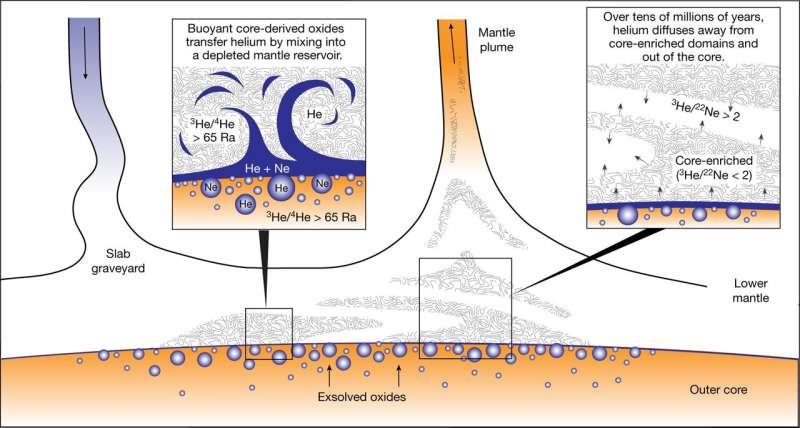October 20, 2023 report
This article has been reviewed according to Science X's editorial process and policies. Editors have highlighted the following attributes while ensuring the content's credibility:
fact-checked
peer-reviewed publication
trusted source
proofread
Further evidence of Earth's core leaking found on Baffin Island

A combined team of geochemists from Woods Hole Oceanographic Institution and California Institute of Technology has found evidence of high levels of helium-3 in rocks on Baffin Island—possible evidence that the Earth's core is leaking. In their paper published in the journal Nature, the group describes their study of helium-3 and helium-4 on the Canadian Arctic Archipelago.
Prior researchers found trace elements of helium-3 in lava flows on Baffin Island, hinting at the possibility that the Earth's core might be leaking. This is because it is an ancient isotope—it was prevalent during the time when Earth was forming and became trapped in the core. But because of its nature, helium-3 that makes its way to the surface soon escapes into the atmosphere and disappears into space. Thus, helium-3 is rare. If it is found on the surface, the odds are high that it made its way out of the core.
Intrigued by the possibility that the Earth's core might be leaking, the research team ventured to Baffin Island and began testing multiple lava flows. They found much higher levels of helium-3 than observed in prior research efforts—higher than anywhere else on Earth. They also found high ratios of helium-3 to helium-4 (a common isotope)—the highest that have ever been measured in terrestrial rock. Such high ratios, the researchers suggest, is another factor suggesting that the helium-3 is leaking from the core.
The research team notes that finding such high levels of helium-3 at a terrestrial site is a big deal, because if it can be proved that the material is indeed leaking from the core, it will provide scientists with a way to study core material, which has never been done before. That could reveal more about the core than previously thought possible. They note that if the helium-3 is coming from the core, then the other material around it should be as well, offering further physical examples of core material.
More information: F. Horton et al, Highest terrestrial 3He/4He credibly from the core, Nature (2023). DOI: 10.1038/s41586-023-06590-8
Journal information: Nature
© 2023 Science X Network




















